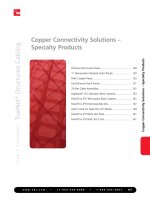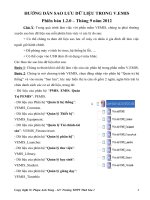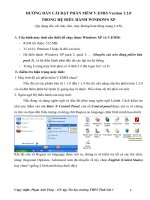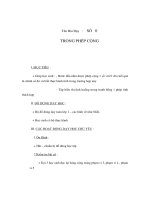- Trang chủ >>
- Y - Dược >>
- Y học công cộng
1 s2 0 s0167587716302549 main
Bạn đang xem bản rút gọn của tài liệu. Xem và tải ngay bản đầy đủ của tài liệu tại đây (1.61 MB, 6 trang )
���������������������������������������������������������������������������������������������������������������������������������������������������������������������������������������������������������������������������������������������������������������������������������������������������������������������������������������������������������������������������������������������������������������������������������������������������������������������������������������������������������������������������������������������������������������������������������������������������������������������������������������������������������������������������������������������������������������������������������������������������������������������������������������������������������������������������������������������������������������������������������������������������������������������������������������������������������������������������������������������������������������������������������������������������������������������������������������������������������������������������������������������������������������������������������������������������������������������������������������������������������������������������������������������������������������������������������������������������������������������������������������������������������������������������������������������������������������������������������������������������������������������������������������������������������������������������������������������������������������������������������������������������������������������������������������������������������������������������������������������������������������������������������������������������������������������������������������������������������������������������������������������������������������������������������������������������������������������������������������������������������������������������������������������������������������������������������������������������������������������������������������������������������������������������������������������������������������������������������������������������������������������������������������������������������������������������������������������������������������������������������������������������������������������������������������������������������������������������������������������������������������������������������������������������������������������������������������������������������������������������������������������������������������������������������������������������������������������������������������������������������������������������������������������������������������������������������������������������������������������������������������������������������������������������������������������������������������������������������������������������������������������������������������������������������������������������������������������������������������������������������������������������������������������������������������������������������������������������������������������������������������������������������������������������������������������������������������������������������������������������������������������������������������������������������������������������������������������������������������������������������������������������������������������������������������������������������������������������������������������������������������������������������������������������������������������������������������������������������������������������������������������������������������������������������������������������������������������������������������������������������������������������������������������������������������������������������������������������������������������������������������������������������������������������������������������������������������������������������������������������������������������������������������������������������������������������������������������������������������������������������������������������������������������������������������������������������������������������������������������������������������������������������������������������������������������������������������������������������������������������������������������������������������������������������������������������������������������������������������������������������������������������������������������������������������������������������������������������������������������������������������������������������������������������������������������������������������������������������������������������������������������������������������������������������������������������������������������������������������������������������������������������������������������������������������������������������������������������������������������������������������������������������������������������������������������������������������������������������������������������������������������������������������������������������������������������������������������������������������������������������������������������������������������������������������������������������������������������������������������������������������������������������������������������������������������������������������������������������������������������������������������������������������������������������������������������������������������������������������������������������������������������������������������������������������������������������������������������������������������������������������������������������������������������������������������������������������������������������������������������������������������������������������������������������������������������������������������������������������������������������������������������������������������������������������������������������������������������������������������������������������������������������������������������������������������������������������������������������������������������������������������������������������������������������������������������������������������������������������������������������������������������������������������������������������������������������������������������������������������������������������������������������������������������������������������������������������������������������������������������������������������������������������������������������������������������������������������������������������������������������������������������������������������������������������������������������������������������������������������������������������������������������������������������������������������������������������������������������������������������������������������������������������������������������������������������������������������������������������������������������������������������������������������������������������������������������������������������������������������������������������������������������������������������������������������������������������������������������������������������������������������������������������������������������������������������������������������������������������������������������������������������������������������������������������������������������������������������������������������������������������������������������������������������������������������������������������������������������������������������������������������������������������������������������������������������������������������������������������������������������������������������������������������������������������������������������������������������������������������������������������������������������������������������������������������������������������������������������������������������������������������������������������������������������������������������������������������������������������������������������������������������������������������������������������������������������������������������������������������������������������������������������������������������������������������������������������������������������������������������������������������������������������������������������������������������������������������������������������������������������������������������������������������������������������������������������������������������������������������������������������������������������������������������������������������������������������������������������������������������������������������������������������������������������������������������������������������������������������������������������������������������������������������������������������������������������������������������������������������������������������������������������������������������������������������������������������������������������������������������������������������������������������������������������������������������������������������������������������������������������������������������������������������������������������������������������������������������������������������������������������������������������������������������������������������������������������������������������������������������������������������������������������������������������������������������������������������������������������������������������������������������������������������������������������������������������������������������������������������������������������������������������������������������������������������������������������������������������������������������������������������������������������������������������������������������������������������������������������������������������������������������������������������������������������������������������������������������������������������������������������������������������������������������������������������������������������������������������������������������������������������������������������������������������������������������������������������������������������������������������������������������������������������������������������������������������������������������������������������������������������������������������������������������������������������������������������������������������������������������������������������������������������������������������������������������������������������������������������������������������������������������������������������������������������������������������������������������������������������������������������������������������������������������������������������������������������������������������������������������������������������������������������������������������������������������������������������������������������������������������������������������������������������������������������������������������������������������������������������������������������������������������������������������������������������������������������������������������������������������������������������������������������������������������������������������������������������������������������������������������������������������������������������������������������������������������������������������������������������������������������������������������������������������������������������������������������������������������������������������������������������������������������������������������������������������������������������������������������������������������������������������������������������������������������������������������������������������������������������������������������������������������������������������������������������������������������������������������������������������������������������������������������������������������������������������������������������������������������������������������������������������������������������������������������������������������������������������������������������������������������������������������������������������������������������������������������������������������������������������������������������������������������������������������������������������������������������������������������������������������������������������������������������������������������������������������������������������������������������������������������������������������������������������������������������������������������������������������������������������������������������������������������������������������������������������������������������������������������������������������������������������������������������������������������������������������������������������������������������������������������������������������������������������������������������������������������������������������������������������������������������������������������������������������������������������������������������������������������������������������������������������������������������������������������������������������������������������������������������������������������������������������������������������������������������������������������������������������������������������������������������������������������������������������������������������������������������������������������������������������������������������������������������������������������������������������������������������������������������������������������������������������������������������������������������������������������������������������������������������������������������������������������������������������������������������������������������������������������������������������������������������������������������������������������������������������������������������������������������������������������������������������������������������������������������������������������������������������������������������������������������������������������������������������������������������������������������������������������������������������������������������������������������������������������������������������������������������������������������������������������������������������������������������������������������������������������������������������������������������������������������������������������������������������������������������������������������������������������������������������������������������������������������������������������������������������������������������������������������������������������������������������������������������������������������������������������������������������������������������������������������������������������������������������������������������������������������������������������������������������������������������������������������������������������������������������������������������������������������������������������������������������������������������������������������������������������������������������������������������������������������������������������������������������������������������������������������������������������������������������������������������������������������������������������������������������������������������������������������������������������������������������������������������������������������������������������������������������������������������������������������������������������������������������������������������������������������������������������������������������������������������������������������������������������������������������������������������������������������������������������������������������������������������������������������������������������������������������������������������������������������������������������������������������������������������������������������������������������������������������������������������������������������������������������������������������������������������������������������������������������������������������������������������������������������������������������������������������������������������������������������������������������������������������������������������������������������������������������������������������������������������������������������������������������� species with higher abundance in each group.
A. Wajid et al. / Preventive Veterinary Medicine 142 (2017) 1–6
this period demonstrates the existence of clades of highly related
viruses infecting different species and different types of production
systems (see highlighted boxes in phylogenetic tree, Fig. 2).
These new data point to a significant role of non-poultry species
kept in captivity in the same geographic region as poultry on the
circulation of NDV in Pakistan. It is unclear if each one of these
cases corresponds to a specific spillover event from poultry farms
or from other unknown reservoirs. However, the high similarity
of sequences (above 99.7%) and the close distances between some
poultry farms to sites of isolation in pet birds and backyard birds
point to the existence of epidemiological connections (Fig. 1). The
continuous circulation of NDV in non-poultry species suggests the
need to develop additional control strategies that would include
active surveillance in pet rearing sites and or sites in which exhibition birds and wild birds are kept in captivity (e.g. zoos and
parks). Recently, wild birds species that are more likely to be in
contact with poultry (“bridge hosts”) have been identified in avian
influenza transmission studies (Caron et al., 2014). A similar type
of study would be needed to better understand the dynamics of
transmission of Newcastle disease viruses. The grouping of peafowl
with poultry isolates during 2013–2015 suggests the interaction
of these two groups of birds and is an example of an area where
increased knowledge and biosecurity measures could be enacted
to prevent the transmission of NDV between the two groups of
birds. The demonstration of clinical signs and the first isolation of
virulent NDV in a Black Swan suggest that the range of possible
hosts may be extending.
The epidemiological situation observed in Pakistan is likely to
be similar to that of many countries in the developing world. Asia,
Africa and Latin America are currently undergoing extensive transformation on their protein production systems toward intensive
poultry farming. Large farms without adequate biosecurity are
often surrounded by existing rudimentary production systems such
as backyard flocks or non-poultry avian species kept for other reasons. Among these, backyard poultry has played and still does play a
significant role in the economy of the villagers in rural areas where
it is primarily kept for the production of meat and eggs. The majority of backyard poultry farming in Pakistan consists of small-scale
(10–15 birds) units. As they are predominantly free ranging, generally there is complete deficiency of biosecurity and good husbandry
practices that could prevent spread of NDV. In addition, traditions
such as keeping exotic pet birds as status symbol, cock fighting,
and for hobbies (pigeon racing and shows) may facilitate the movement of infected pet birds. Although presently uncommon, similar
strategies as those used in commercial poultry, such as vaccination, may contribute to the better control of ND. Vaccination is not
likely to prevent viral replication; however, most existing vaccines
are shown to reduce virus replication and shedding up to 2 logs in
comparison to naïve birds, which would help decrease the amount
of NDV shed into the environment (Dimitrov et al., 2016a).
Acknowledgements
We would like to acknowledge Tim Olivier and Dawn WilliamsCoplin for their technical assistance. We appreciate critical and
constructive reviews provided by three anonymous reviewers.
This work was supported by the Department of State Biosecurity Engagement Program (BEP, NDV 31063), the Defense Threat
Reduction Agency Cooperative Biological Engagement Program,
USDA/ARS #685/FRCALL 12-6-2-0005, USDA CRIS 6040-32000064-00D.
The mention of trade names or commercial products in this
publication is solely for the purpose of providing specific information and does not imply recommendation or endorsement by the
5
U.S. Department of Agriculture. The USDA is an equal opportunity
provider and employer.
Appendix A. Supplementary data
Supplementary data associated with this article can be found, in
the online version, at />04.010.
References
Alexander, D.J., Swayne, D.E., 1998. Newcastle disease virus and other avian
paramyxoviruses. In: Swayne, D.E., Glisson, J.R., Jackwood, M.W., Pearson, J.E.,
Reed, W.M. (Eds.), A Laboratory Manual for the Isolation and Identification of
Avian Pathogens. The American Association of Avian Pathologists, Kennett
Square, PA, pp. 156–163.
Ayala, A.J., Dimitrov, K.M., Becker, C.R., Goraichuk, I.V., Arns, C.W., Bolotin, V.I.,
Ferreira, H.L., Gerilovych, A.P., Goujgoulova, G.V., Martini, M.C., Muzyka, D.V.,
Orsi, M.A., Scagion, G.P., Silva, R.K., Solodiankin, O.S., Stegniy, B.T., Miller, P.J.,
Afonso, C.L., 2016. Presence of vaccine-derived Newcastle disease viruses in
wild birds. PLoS One 11, e0162484.
Benson, D.A., Clark, K., Karsch-Mizrachi, I., Lipman, D.J., Ostell, J., Sayers, E.W., 2015.
GenBank. Nucleic Acids Res. 43, D30.
Cardenas Garcia, S., Lopez, R.N., Morales, R., Olvera, M.A., Marquez, M.A., Merino,
R., Miller, P.J., Afonso, C.L., 2013. Molecular epidemiology of Newcastle disease
in Mexico and the potential spillover of viruses from poultry into wild bird
species. Appl. Environ. Microbiol. 79, 4985–4992.
Caron, A., Grosbois, V., Etter, E., Gaidet, N., de Garine-Wichatitsky, M., 2014. Bridge
hosts for avian influenza viruses at the wildlife/domestic interface: an
eco-epidemiological framework implemented in southern Africa. Prev. Vet.
Med. 117, 590–600.
Caron, A., Cappelle, J., Cumming, G.S., de Garine-Wichatitsky, M., Gaidet, N., 2015.
Bridge hosts, a missing link for disease ecology in multi-host systems. Vet. Res.
46, 83.
Diel, D.G., da Silva, L.H., Liu, H., Wang, Z., Miller, P.J., Afonso, C.L., 2012. Genetic
diversity of avian paramyxovirus type 1: proposal for a unified nomenclature
and classification system of Newcastle disease virus genotypes. Infect. Genet.
Evol. 12, 1770–1779.
Dimitrov, K.M., Afonso, C.L., Yu, Q., Miller, P.J., 2016a. Newcastle disease
vaccines—a solved problem or a continuous challenge? Vet. Microbiol., in press
/>Dimitrov, K.M., Bolotin, V., Muzyka, D., Goraichuk, I.V., Solodiankin, O., Gerilovych,
A., Stegniy, B., Goujgoulova, G.V., Silko, N.Y., Pantin-Jackwood, M.J., Miller, P.J.,
Afonso, C.L., 2016b. Repeated isolation of virulent Newcastle disease viruses of
sub-genotype VIId from backyard chickens in Bulgaria and Ukraine between
2002 and 2013. Arch. Virol. 161, 3345–3353.
Dimitrov, K.M., Ramey, A.M., Qiu, X., Bahl, J., Afonso, C.L., 2016c. Temporal,
geographic, and host distribution of avian paramyxovirus 1 (Newcastle disease
virus). Infect. Genet. Evol. 39, 22–34.
Dimitrov, K.M., Sharma, P., Volkening, J.D., Goraichuk, I.V., Wajid, A., Rehmani, S.F.,
Basharat, A., Shittu, I., Joannis, T.M., Miller, P.J., Afonso, C.L., 2017. A robust and
cost-effective approach to sequence and analyze complete genomes of small
RNA viruses. Virol. J. 14, 72.
Khan, M.Z., Huq, M.M., 1963. Infectious respiratory diseases of poultry in Pakistan.
Bull. Off. Int. Epizoot. 60, 983–987.
Kumar, A., Maan, S., Mahajan, N.K., Rana, V.P., Jindal, N., Batra, K., Ghosh, A., Mishra,
S.K., Kapoor, S., Maan, N.S., 2013. Detection and molecular characterization of
Newcastle disease virus in peafowl (Pavo cristatus) in Haryana State, India.
Indian J. Virol. 24, 380–385.
Miller, P.J., Koch, G., 2013. Newcastle disease. In: Swayne, D.E., Glisson, J.R.,
McDougald, L.R., Nolan, L.K., Suarez, D.L., Nair, V. (Eds.), Diseases of Poultry.
Wiley-Blackwell, Hoboken, New Jersey, pp. 89–138.
Miller, P.J., Kim, L.M., Ip, H.S., Afonso, C.L., 2009. Evolutionary dynamics of
Newcastle disease virus. Virology 391, 64–72.
Miller, P.J., Decanini, E.L., Afonso, C.L., 2010. Newcastle disease: evolution of
genotypes and the related diagnostic challenges. Infect. Genet. Evol. 10, 26–35.
Miller, P.J., Dimitrov, K.M., Williams-Coplin, D., Peterson, M.P., Pantin-Jackwood,
M.J., Swayne, D.E., Suarez, D.L., Afonso, C.L., 2015a. International biological
engagement programs facilitate Newcastle disease epidemiological studies.
Front. Public Health 3, 235.
Miller, P.J., Haddas, R., Simanov, L., Lublin, A., Rehmani, S.F., Wajid, A., Bibi, T., Khan,
T.A., Yaqub, T., Setiyaningsih, S., Afonso, C.L., 2015b. Identification of new
sub-genotypes of virulent Newcastle disease virus with potential panzootic
features. Infect. Genet. Evol. 29, 216–229.
Munir, M., Linde, A.M., Zohari, S., Stahl, K., Baule, C., Holm, K., Engstrom, B., Berg,
M., 2010. Complete genome analysis of an avian paramyxovirus type 1 strain
isolated in 1994 from an asymptomatic black-headed gull (Larus ridibundus)
in southern Sweden. Avian Dis. 54, 923–930.
Nolen, R.S., 2002. Exotic Newcastle disease strikes game birds in California. J. Am.
Vet. Med. Assoc. 221, 1369–1370.
OIE, 2012. Newcastle Disease. Biological Standards Commission, Manual of
Diagnostic Tests and Vaccines for Terrestrial Animals: Mammals, Birds and
Bees. World Organisation for Animal Health, Paris, France, pp. 555–574.
6
A. Wajid et al. / Preventive Veterinary Medicine 142 (2017) 1–6
Pedersen, J.C., Senne, D.A., Woolcock, P.R., Kinde, H., King, D.J., Wise, M.G.,
Panigrahy, B., Seal, B.S., 2004. Phylogenetic relationships among virulent
Newcastle disease virus isolates from the 2002–2003 outbreak in California
and other recent outbreaks in North America. J. Clin. Microbiol. 42, 2329–2334.
Rehmani, S.F., Wajid, A., Bibi, T., Nazir, B., Mukhtar, N., Hussain, A., Lone, N.A.,
Yaqub, T., Afonso, C.L., 2015. Presence of virulent Newcastle disease virus in
vaccinated chickens in farms in Pakistan. J. Clin. Microbiol. 53, 1715–1718.
Seal, B.S., King, D.J., Locke, D.P., Senne, D.A., Jackwood, M.W., 1998. Phylogenetic
relationships among highly virulent Newcastle disease virus isolates obtained
from exotic birds and poultry from 1989 to 1996. J. Clin. Microbiol. 36,
1141–1145.
Shabbir, M.Z., Goraya, M.U., Abbas, M., Yaqub, T., Shabbir, M.A., Ahmad, A., Anees,
M., Munir, M., 2012. Complete genome sequencing of a velogenic viscerotropic
avian paramyxovirus 1 isolated from pheasants (Pucrasia macrolopha) in
Lahore. Pak. J. Virol. 86, 13828–13829.
Tamura, K., Stecher, G., Peterson, D., Filipski, A., Kumar, S., 2013. MEGA6: molecular
evolutionary genetics analysis version 6.0. Mol. Biol. Evol. 30, 2725–2729.
Tamura, K., 1992. Estimation of the number of nucleotide substitutions when there
are strong transition-transversion and G + C-content biases. Mol. Biol. Evol. 9,
678–687.
ˇ
Vidanovic, D., Sekler,
M., Aˇsanin, R., Milic, N., Niˇsavic, J., Petrovic, T., Savic, V., 2011.
Characterization of velogenic Newcastle disease viruses isolated from dead
wild birds in Serbia during 2007. J. Wildl. Dis. 47, 433–441.
Vijayarani, K., Muthusamy, S., Tirumurugaan, K.G., Sakthivelan, S.M., Kumanan, K.,
2010. Pathotyping of a Newcastle disease virus isolated from peacock (Pavo
cristatus). Trop. Anim. Health Prod. 42, 415–419.
Vindevogel, H., Duchatel, J.P., 1988. Panzootic Newcastle disease virus in pigeons.
In: Alexander, D.J. (Ed.), Newcastle Disease. Kluwer Academic Publishers,
Boston, pp. 184–196.









